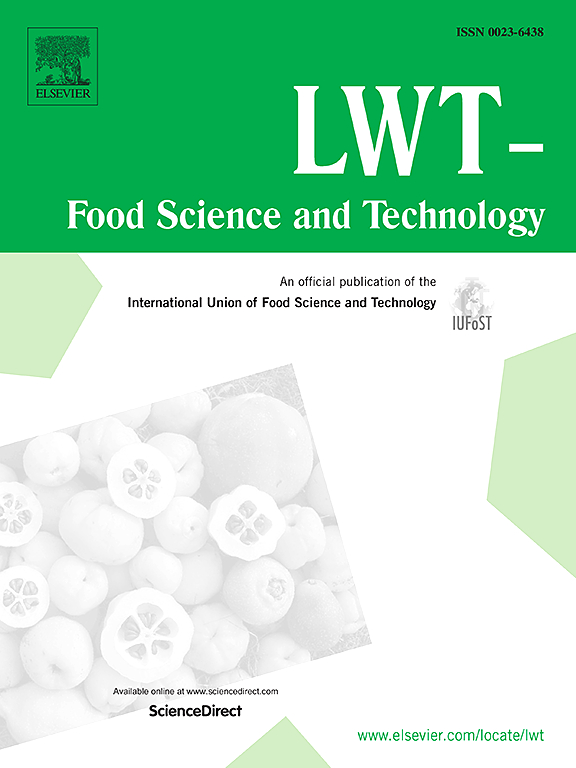肉类和植物性肉类类似物的动态感官比较
IF 6
1区 农林科学
Q1 FOOD SCIENCE & TECHNOLOGY
引用次数: 0
摘要
近年来,对植物性肉类类似物的需求显著增加。了解消费者与这些产品之间的关系至关重要。本研究旨在通过动物性食品(牛肉和鸡肉)和商业模拟食品(面筋和鸡肉模拟)的动态感官特征,了解消费体验和可接受程度。多次进食时间感觉优势法(M-TDS)已应用于杂食性消费者。根据每一种食物的感官特性,采用最多100秒内三次摄入的评价方案。在每次评估结束时,可接受程度是已知的。研究结果表明,动物性食物和它们的类似物之间存在着不同的感官体验。从每种产品的不同感官特征开始,消费者体验以不同的方式受到影响。不同香料的风味特征在类似物中最为突出。有迹象表明,非肉类的质地属性会对类似物的可接受性产生负面影响,参与者表示面筋不太美味。最后,提供了与肉类类似物和肉类相关的感官体验的全面理解。本文章由计算机程序翻译,如有差异,请以英文原文为准。
Comparative dynamic sensory profile of meat and plant-based meat analogs
In recent years, demand for plant-based meat analogs has significantly increased. Understanding consumer relationships with these products is essential. This study aims to characterize animal-based foods (beef and chicken) and commercial analog versions (seitan and chicken analog) through their dynamic sensory profile, understanding the consumption experience and degree of acceptability. The Multiple intake Temporal Dominance of Sensation method (M-TDS) has been applied with omnivorous consumers. The evaluation protocol with three intakes in a maximum time of 100s of consumption has been applied according to the sensory characteristics of each food. At the end of each evaluation, the level of acceptability has been known. The results indicate a diverse sensory experience between animal-based foods and their analogs. Starting from a different sensory profile for each product, the consumer experience has been affected in different ways. The flavor characteristics associated with different spices are the most prominent in the analogs. There are indications that texture attributes not characteristic of meat can negatively affect the acceptability of the analogs, with seitan being indicated as less palatable by the participants. Finally, a comprehensive understanding of the sensory experience associated with both meat analogs and meats has been provided.
求助全文
通过发布文献求助,成功后即可免费获取论文全文。
去求助
来源期刊

LWT - Food Science and Technology
工程技术-食品科技
CiteScore
11.80
自引率
6.70%
发文量
1724
审稿时长
65 days
期刊介绍:
LWT - Food Science and Technology is an international journal that publishes innovative papers in the fields of food chemistry, biochemistry, microbiology, technology and nutrition. The work described should be innovative either in the approach or in the methods used. The significance of the results either for the science community or for the food industry must also be specified. Contributions written in English are welcomed in the form of review articles, short reviews, research papers, and research notes. Papers featuring animal trials and cell cultures are outside the scope of the journal and will not be considered for publication.
 求助内容:
求助内容: 应助结果提醒方式:
应助结果提醒方式:


